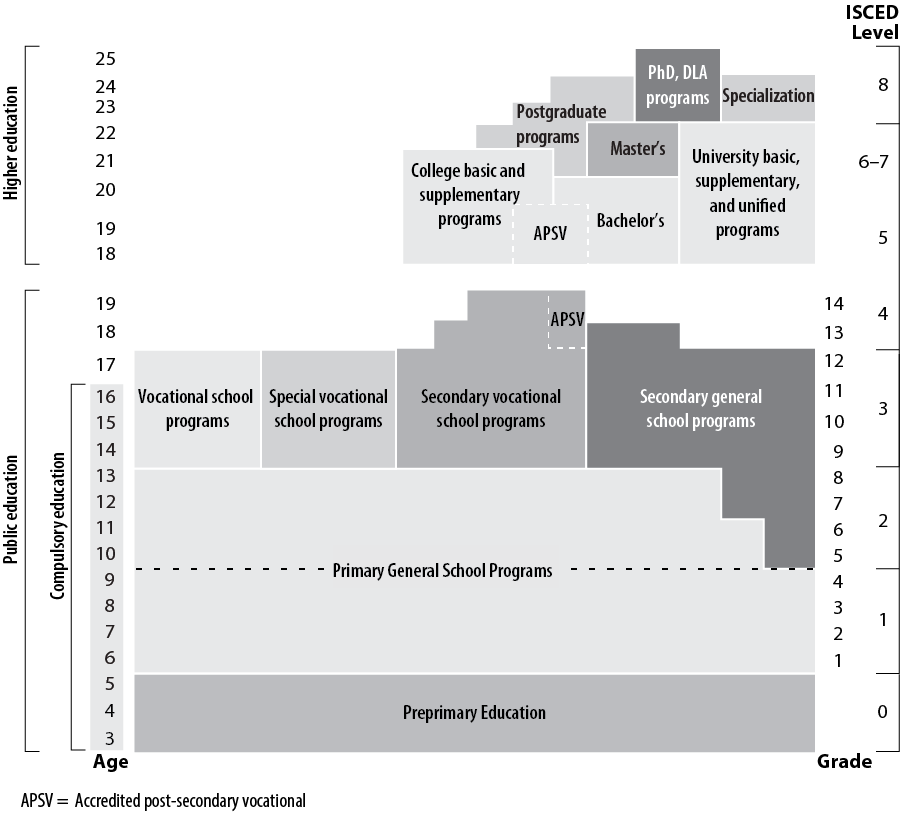Overview of Education System
According to the Act CXC of 2011 on National Public Education, the state ensures the provision of core tasks of public education with the exception of preschools.2 The state provides public education activities by establishing and operating institutions, as well as on the grounds of a public education agreement with a church or private institution. The local government ensures the provision of preschool education by establishing and operating institutions or by means of a public education agreement. The government is authorized to regulate the introduction and issuing of the national curriculum.
Public education institutions are professionally independent. Concerning their organization and operation, they can decide upon each matter not referred by law to the competence of another entity. Exhibit 1 shows the structure of the Hungarian education system by age, grade, and ISCED level.3,4
Exhibit 1: Structure of the Hungarian Public Education and Higher Education System by Age, Grade, and ISCED Level

Crèche (nursery) is a noncompulsory welfare institution catering to children age 20 weeks to 3 years, and provides professional daycare and development.
As of September 2015, preprimary education is compulsory for children ages 3 to 6. Previously, enrollment was mandatory at age 5, although children generally were enrolled in preprimary education at age 3.
Elementary education is organized as a single structure system in eight year primary schools (typically for students ages 6 to 14, Grades 1 to 8). Secondary education (typically for students ages 14 to 18, Grades 9 to 12) is provided by secondary general schools, secondary vocational schools, or vocational and special vocational schools. Secondary general schools also are allowed to offer longer programs starting earlier (in Grade 5 or 7). Some four year grammar and secondary vocational schools offer a language preparatory first year in which students focus on foreign language learning supplemented with some mother tongue and mathematics lessons before starting the four year program, hence adding one year to the usual four year courses.
Secondary general schools provide general education and preparation for the secondary school leaving examination, which is the prerequisite for admission to higher education. Secondary vocational schools provide general and prevocational education, prepare students for the secondary school leaving examination, and offer vocational post-secondary nontertiary programs. Vocational schools provide general, prevocational, and vocational education, and also may provide remedial lower secondary general education for students who have not completed basic school.
Higher education programs are offered by public or private universities and colleges (nonuniversity higher education institutions). In accordance with the three cycle Bologna Process degree structure, bachelorʼs degree programs last six to eight semesters and can be followed by masterʼs degree programs for another two to four semesters. The third cycle provides doctoral studies. There also are undivided long programs.5
